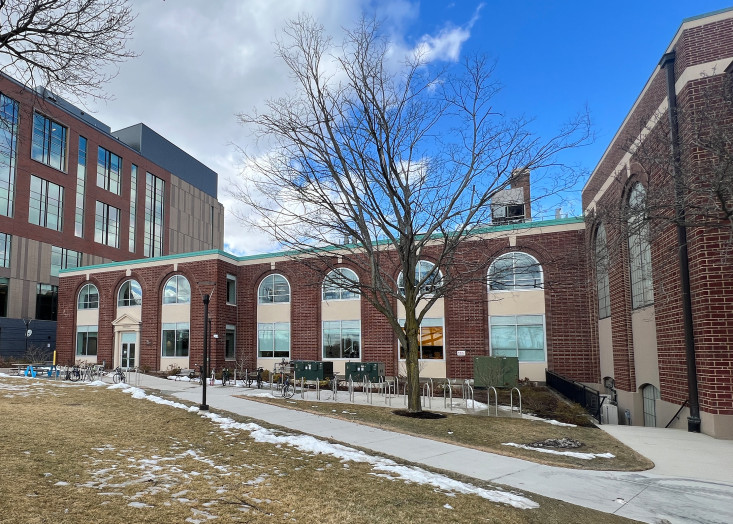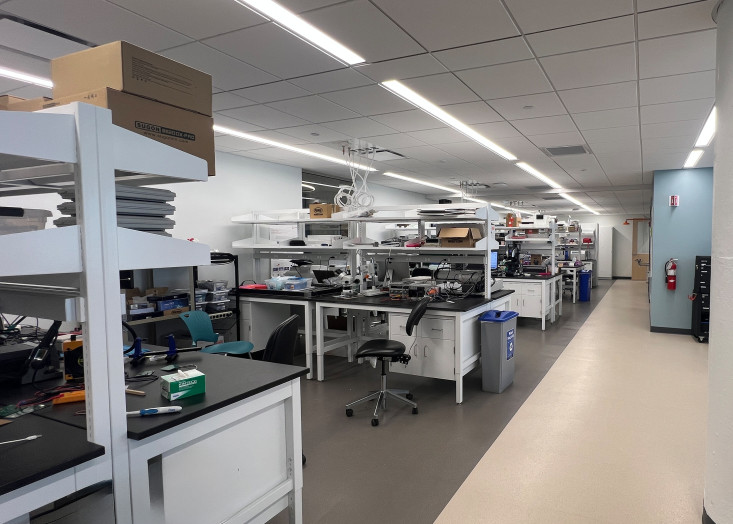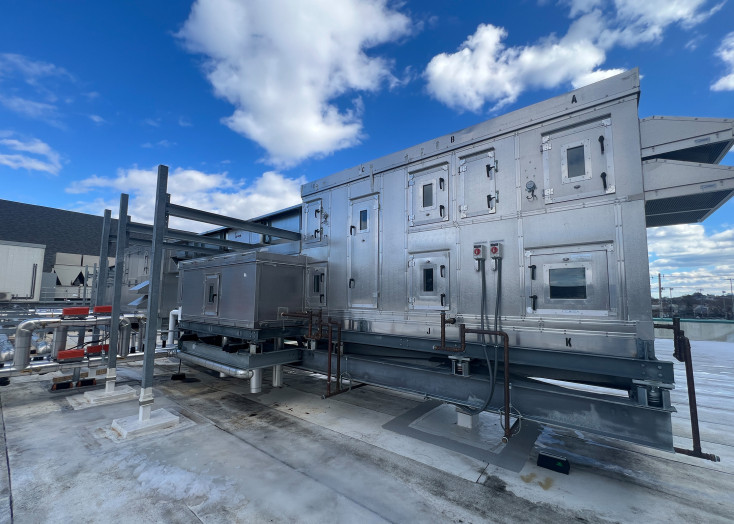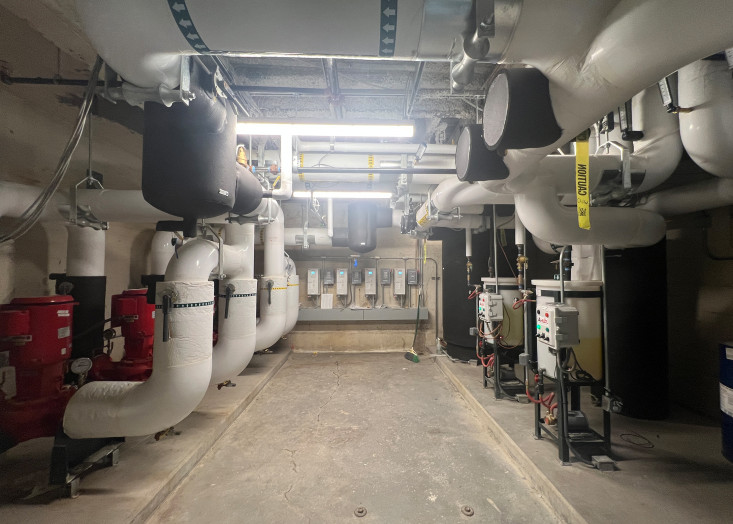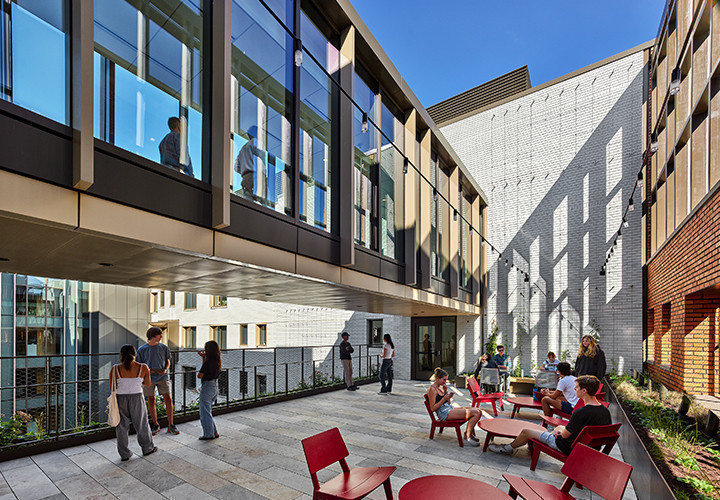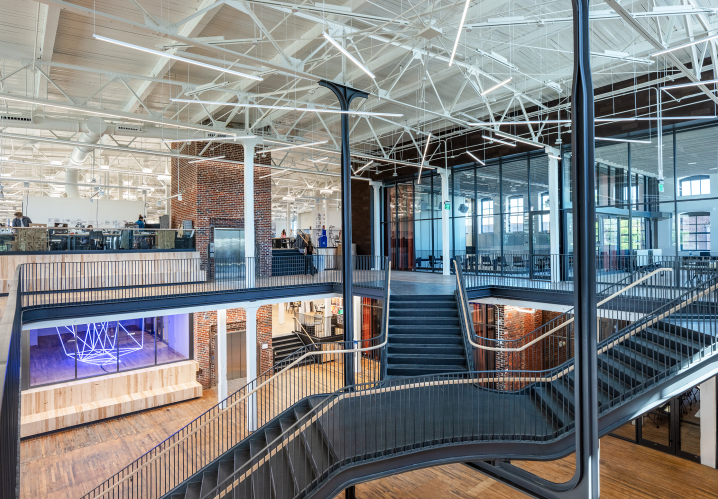Constructed in the 1920s, Halligan Hall is a 44,000 ft² academic and laboratory building on the Tufts University Medford campus. Home to the Electrical and Computer Engineering department, the building had undergone several partial renovations over the last century, including an addition to the original structure. However, in recent years, the building’s programming layout, infrastructure, and systems no longer supported the University’s evolving needs.
With anticipated growth in student enrollment, faculty positions, and research initiatives, the facility underwent a comprehensive renovation that kept the existing building shell while incorporating targeted building envelope upgrades, new MEP systems, and a reimagined space program. This transformed facility reflects Tufts University’s dedication to advancing its campus-wide decarbonization goals.
Designed to bring students and faculty together in meaningful ways, the project successfully consolidated ECE research under one roof, fostering a greater sense of community and engagement while improving accessibility to research facilities and educational resources. The modernized facility now supports a diverse range of functions while significantly reducing greenhouse gas emissions, ensuring Halligan Hall remains a vibrant, future-ready environment for innovation and learning.
Pre-renovation, Halligan Hall had an Energy Use Intensity (EUI) of 98 kBtu/ft²/yr, supported by gas-fired boilers, a range of aging cooling systems, and a deteriorating building envelope. Through a comprehensive master plan study, Tufts set an ambitious target EUI of at least 50 kBtu/ ft²/yr for the renovated building. To achieve this goal, CMTA implemented all-electric, energy-efficient HVAC systems, including one of the region’s first large-scale modular air-to-water source heat pumps (ASHP), enabling zoned heating and cooling for 24/7 comfort.
Dedicated outside air ventilation systems with energy recovery further minimized energy waste, while new lighting, daylighting enhancements, and specialized plumbing systems provided the infrastructure necessary for advanced research activities. The revitalized building envelope also improves energy performance while preserving Halligan Hall’s architectural character. Surpassing the EUI goal, the facility now operates at an impressive 46 EUI, reducing energy usage by more than 50%.
